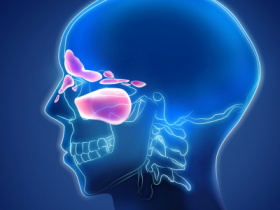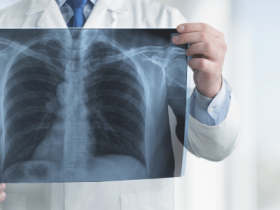Assessing patients’ subjective responses to an oxymetazoline nasal decongestant test has often been used to screen for their suitability for turbinate reduction surgery. If individuals respond well to oxymetazoline, they are also expected to benefit from tribunate reduction surgery. Contrarily, those who do not respond to an oxymetazoline test may also not benefit from surgery. However, the predictive value of the nasal decongestant test for turbinate reduction surgery outcomes has not been assessed objectively, and the nasal airways of patients who had undergone an oxymetazoline test and those who had undergone a turbinate reduction surgery have not been compared aerodynamically.
This knowledge gap was addressed by a study presented during the Top Clinical Abstracts session at the 2024 American Rhinologic Society (ARS) meeting at the COSM, held on May 15th–16th in Chicago. The investigation tested whether a nasal decongestion test can predict turbinate reduction surgery outcomes and was presented by Zachary Root, BS from The Ohio State University.
The authors conducted a prospective, longitudinal, single-blinded, cohort study. Computational fluid dynamic evaluations, based on computed tomography (CT) scans at baseline, 30 minutes post-oxymetazoline (Afrin) administration, and 2 months postoperatively, were employed. Nasal obstruction symptom evaluation (NOSE) scores and visual analog scale of obstruction (VAS) scores were measured. The enrolled patients had nasal obstruction for over 3 months and a NOSE score > 40 and had failed 1 month of medical treatment. Patients with chronic rhinosinusitis, a nasal trauma, any neurological disorders, and pregnancy were excluded from the study.
The final analysis included 11 patients with a median age of 41 years. There were significant baseline to post-oxymetazoline to postoperative improvements in both the patients’ NOSE scores (71.82 ± 14.19 to 42.27 ± 25.26 to 22.27 ± 21.04, p < 0.05) and VAS scores (6.09 ± 2.41 to 4.14 ± 2.20 to 2.08 ± 1.56, p < 0.05). In addition, there was a significant correlation between symptom improvement with oxymetazoline and turbinate reduction surgery. In other words, patients who responded well to oxymetazoline also benefited from turbinate reduction surgery.
Next, the authors set out to identify variables that help drive the relationship between the oxymetazoline nasal decongestant test and turbinate reduction surgery and to gain insight into the underlying mechanisms. They set three criteria. First, the variable had to improve both post-oxymetazoline testing and post-surgery. Second, the degree of change of the variable had to correlate significantly between post-oxymetazoline and post-surgery. Third, the improvement of the variable had to correlate significantly to subjective symptom improvement.
The anatomical impact of oxymetazoline on the inferior and middle turbinates was broader than that of surgery. Similar improvements in the regional airflow rate were observed post-oxymetazoline and post-surgery, and they were mainly detected in the inferior turbinate. Decreased nasal resistance and increased regional airflow rates and regional air/mucosa shear force and heat flux correlated significantly post-oxymetazoline testing and postoperatively. However, the only two variables that were significantly correlated with symptom score improvement were increased regional airflow rates (NOSE and VAS r = 0.298–0.324, p < 0.05) and peak heat flux (NOSE r = 0.439, VAS r = 0.477, p < 0.05).
Study limitations included the small sample size as well as potential individual variabilities in patient anatomy and responsiveness to oxymetazoline. In addition, two rhinologists performed the surgeries, and even though they were blinded to the patient outcomes, there may have been differences in their operative techniques.
In conclusion, this study provided the first objective evidence that the oxymetazoline nasal decongestant test can help predict turbinate reduction surgery outcomes. It also identified the variables that drive this relationship, including an improvement in regional airflow rates and heat flux.







